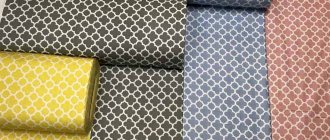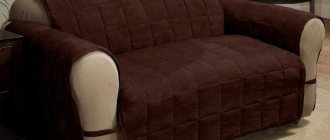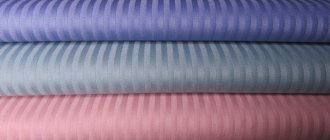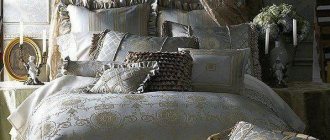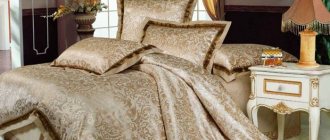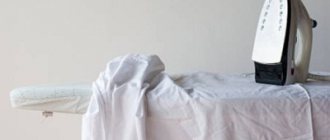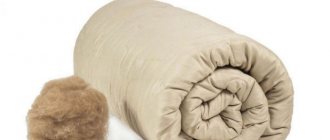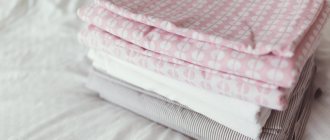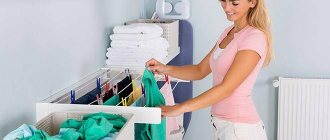An integral accessory in the life of a modern person is bedding: linen, mattress, pillow, blanket. Comfort and quality of sleep, which allows you to fully restore physical and emotional strength, largely depend on the fabric for bed linen. When choosing a material, you should give preference to natural silk, cotton and linen. To maintain health, bed linen should be well breathable and not electrified, while at the same time being beautiful and stylish.
Cotton fabrics
Cotton is considered to be the best fabric for bed linen, which is highly valued for its affordable price, hygroscopicity, and long service life. Cotton fiber is a natural raw material from which fabric is obtained for the production of clothing and textiles. To make the fabric resistant to deformation and elasticity, additives are used: acetate, viscose, polyester. Fibers obtained from cotton fruits are intertwined in various ways. The softness, hardness, and density of the product depends on the type of weaving of fabrics for bed linen, which can be:
- twill;
- linen;
- satin;
- finely patterned.
Natural cotton is used to produce cotton fabrics. Materials for bed linen are classified taking into account texture, density, weaving methods, and processing technology. The most popular ones include flannel, chintz, percale, satin, poplin, calico, cambric, polycotton, ranfors, microfiber.
Percale
Percale is a thin and durable cotton fabric with a plain weave. To achieve excellent consumer characteristics, manufacturers use cotton varieties with long fibers. The soft and silky fabric has amazing strength, which provides bed linen with unique wear resistance. The price of a set of percale linen is higher than that of calico and lower than that of satin. The advantages of percale include hygiene, hypoallergenicity, environmental safety, easy care, and ease of ironing. The fabric does not fade when washed, retains its appearance and shape, does not form pilling, has minimal shrinkage, and is ideal for hot climates.
Chintz
Chintz is an inexpensive fabric with a sparse weave of thick threads. The fabric quickly loses its visual appeal after several washes. The low quality of bed linen is compensated by the low price.
Batiste
Batiste is a light, translucent, unpractical fabric with a plain weave of long-staple cotton threads. Manufacturers produce ivory-colored and white cambric in the following types: printed, plain-dyed, mercerized, bleached. Bed linen made from cambric is expensive, it is presented as an original gift on special occasions - newlyweds, newborns.
Calico
Calico - a dense cross-shaped weave of thick threads is used in the production of this type of fabric. It consists of 100% cotton and occupies a leading position among analogues in terms of environmental and performance indicators. The fabric is highly abrasive and breathable. For sewing bedding sets, bleached, plain-dyed, and printed calico is used. Calico calico is classified into the main types: calico luxury, GOST, standard, comfort, light, ranfors. Among the best is luxury calico - smooth, soft, without pilling. Options GOST, standard, comfort, light - differ in density, the indicators of which determine the quality and cost of the fabric. Ranfors is a particularly dense fabric, the integrity and color palette of which is preserved for many years of intensive use.
Polycotton
Polycotton is a variant of mixed fabric, especially popular for sewing mattresses, pillows, blankets, and bed linen. Synthetic polyester thread is added to calico in various percentages of cotton. Finished products are distinguished by their low price, bright patterns, minimal shrinkage and creasing, and economical powder consumption when washing.
Poplin
Poplin is a light and thin cotton fabric, available bleached or dyed. The second option is classified into plain-dyed, printed, and multi-colored. The bedding sets are made from 100% cotton, the advantages include color and shape stability, comfort of use in winter and summer due to excellent hygroscopicity, environmentally friendly fabric is safe for allergy sufferers. Poplin has high strength, tensile strength, and wear resistance when washed. The fabric practically does not wrinkle, retains heat well, and the weaving of the threads ensures good breathability.
Satin
Satin is a dense and shiny fabric made from double-twisted cotton thread. The lightweight fabric looks like silk; its natural composition provides comfort in warm and cold seasons. Bamboo and polyester fibers give satin its characteristic shine. Velvety and soft fabric is obtained using the satin weaving method. Depending on the appearance, density and composition of the fibers, satin is divided into types:
- Regular satin
is a popular and affordable fabric produced using the satin weave method and is made from 100% cotton. A design is applied to a shiny, soft, medium-smooth fabric using pigment printing. Mercerized fabric acquires additional strength and does not form pellets on the surface. - Printed satin
is a dense, soft, hygienic fabric for bed linen. Painted using the reactive printing method, the design is unusually durable and clear - Printed satin
- 100% cotton fabric, the image is applied taking into account the size of the pillowcase or duvet cover - Satin jacquard
is an elite fabric made of 100% cotton, the pattern is applied during weaving on special jacquard looms. The fabric resembles printed silk; due to mercerization, the smooth fabric acquires additional shine and strength - Stripe satin
is an elite fabric, a type of satin jacquard with a striped pattern. The canvas is painted with natural dyes in pastel, pearlescent, golden tones. Elegant and shiny lingerie sets look luxurious and incredibly attractive - Mako-satin
- called cotton silk, is made from Egyptian raw materials. The smooth, thinnest fabric is dyed using reactive technology. Due to mercerization, the fabric becomes resistant to abrasion and pilling. Soft and shiny fabric for duvet covers and pillowcases retains its shape well and does not deform over time.
The brilliant and bright pattern on satin does not fade and holds the color well. Long-lasting gloss remains after multiple washes. The use of environmentally friendly and high-quality raw materials ensures safety for adults and children.
Sale of bed linen sets
Best prices for bulk purchases
View in the catalog
Flannel
Flannel is the most pleasant bedding material. Soft and unusually delicate cotton fabric allows you to sew a children's set, a set for a cold winter or the off-season.
Ranfos
Ranfors is a fabric made from 100% cotton thread, the weaving density of which is higher than calico and linen. The very strong and durable fabric is uniquely hygienic. Eco-friendly and hypoallergenic products perfectly absorb moisture, create comfortable warmth in winter and coolness in summer. Silky and soft texture suitable for children's underwear.
Microfiber
Microfiber is a 100% cotton fabric that has relatively recently appeared on the bed linen market. Finished products are affordable, easy to maintain, and resistant to deformation. The microfiber cloth practically does not wrinkle, and puffs and pellets do not form on the surface.
Material
Let's start with the most important thing: what the sets are made of. After all, the material is the basis of quality and determines the appearance, price, wear resistance and softness.
When purchasing, pay attention to the composition of the fabric, and not just the name, since there are situations when openly synthetic products are hidden behind “good” names. For example, satin can be made from 100% cotton, and then it is a wonderful choice for the whole family. But there is synthetic satin, and it will bring nothing but disappointment. The same situation applies to other types of fabrics.
It is impossible to say unequivocally which material is better: too much here depends on subjective tactile sensations.
Video on the topic:
Cotton
Cotton deserves to be placed in a separate category, because the lion's share of all sets is made from it. Moreover, depending on the method of twisting, fiber thickness and production method, products with completely different properties are obtained. We list the most common types of cotton textiles.
Calico deservedly occupies a leading position among its fellows. This is due to a number of advantages:
- products made from calico are of high quality, last a long time and do not lose their attractiveness;
- unpretentious in care;
- allow air to pass through;
- they are inexpensive.
The only disadvantages include some roughness, which is explained by the structure and density of calico.
Chintz will cost even less than calico, and is more pleasant to the touch. But it is short-lived and cannot withstand more than 60 washes: the fabric becomes thinner and the color is lost.
Because of its tenderness, it is often used for sewing children's underwear.
There is a special variety - seersucker. This is crinkled chintz. The texture of such models is heterogeneous: striped or checkered.
Poplin has an unusual structure - finely ribbed and with a matte sheen. It has good consumer properties: it can withstand many washes, is durable, does not wrinkle, allows the skin to breathe and is not very expensive.
However, the structure makes the material stiff (though softer than calico), which may be uncomfortable for some people.
Satin is very smooth and delicate, looks like silk, but the reverse side is rough, which means it will not slip while resting. Satin is also durable, does not fade, does not wrinkle, and provides ventilation.
Among the disadvantages, it is necessary to note the higher cost than previous options.
Terry (frote) has a thread pile on one side in the form of loops. Towels and terry robes are made from similar fabric.
This linen is comfortable and warm to sleep on. In addition, it retains all the advantages of cotton products: long service life and ease of care.
This material requires careful handling, otherwise unsightly puffs may remain on the surface. You also need to take into account that it takes a long time to dry.
Flannel is characterized by soft fleecy. In other words, she has a little “fluff”. Because of this, it is very warm, tactilely pleasant and at the same time keeps its shape and does not wrinkle.
But over time, the pile becomes pelletized, which deteriorates the feel and appearance of the set.
Percale is an expensive option, characterized by increased density. Due to this, percale is often used to frame feather pillows, since it does not allow any fluff to leak through.
The surface is soft, smooth, delicate and, in addition, has excellent performance characteristics: durable, withstands many washes.
Natural materials
If you want something “different,” then you can buy more interesting options for natural fabrics.
Linen is wear-resistant, hypoallergenic, antibacterial properties and good thermal conductivity (maintains a stable body temperature in both heat and cold).
However, flax is rough, so it is not an acquired taste. It also shrinks from hot water and is difficult to iron.
Silk has long been synonymous with luxury, but having tried it in practice, many reviews admit that they are disappointed and put it off until better times. It's all about excessive smoothness, due to which the blanket slides over the body, and the sheet often gets knocked down. To avoid this, buy a sheet with an elastic band.
But on summer nights, silk will provide additional coolness and will not provoke unwanted reactions. At the same time, it is quite picky: it does not tolerate machine washing and water temperatures above 30 degrees Celsius.
Viscose is produced artificially from cellulose. The technology used to produce raw materials determines what the final product will look like: silk, cotton, wool or linen.
This fabric absorbs moisture, is light and soft, and breathable. In addition, it does not electrify and drapes perfectly into beautiful folds.
There are improved types of viscose that have appeared relatively recently. This is for example:
- Tencel – eucalyptus wood is used as a raw material;
- modal - similar in quality to cotton.
Synthetic and mixed fabrics
Materials artificially made from synthetic raw materials include polyester and microfiber.
Polyester is very practical and wear-resistant, it is not hazardous to health. However, it does not allow air to pass through well, which makes sleeping on it uncomfortable in hot weather.
In its pure form it is practically not used. Much more often, polyester is used in combination with natural fabrics. For example, 70% cotton and 30% polyester. This makes the fabric more wear-resistant and preserves all the benefits of natural fiber.
Microfiber is a man-made product. It is smooth and silky, but at the same time dense, does not change its size and brightness. In addition, it dries quickly, does not wrinkle, does not electrify, and does not form pills or puffs. It allows air to pass through, absorbs moisture and does not provoke allergies. And in addition to this, its price is quite low.
Everything would be fine, but such a set will not last long - from 2 to 5 years. Also, it should not be dipped in hot water and dried on heating devices.
Bamboo – the composition contains up to 60% bamboo fiber, the rest is cotton or silk. This material allows the skin to “breathe”, does not contribute to the occurrence of unwanted reactions, is very comfortable and pleasant, and has antimicrobial properties.
It has no significant disadvantages, except for the cost.
Luxury products
These products are made from expensive raw materials, and what makes them different is their stunning design. Such models will be a wonderful gift for a wedding or birthday.
Batiste is made from cotton, linen or synthetic fabric. It is very smooth, airy, pleasant to the body. It produces exquisite and unique products thanks to a special weave that forms beautiful patterns.
Unfortunately, due to the fact that the fabric is thin, it quickly becomes unusable, so these sets are for special occasions.
Jacquard is a method of weaving threads that creates a heavy fabric with a relief pattern. Produced from natural or artificial raw materials. Textiles do not wear out or become thin over time, keep their shape and retain heat.
But it requires delicate handling: wash in cool water and iron only inside out.
Egyptian cotton (mako-satin) grows only on the banks of the Nile River, and it is harvested by hand, so you will have to pay a lot for it. But careful processing allows you to preserve the structure of the fiber, and there are fewer knots in the texture. It comes out silky, light, with incredibly rich color. At the same time, it does not require labor-intensive care and lasts for more than one year.
Japanese silk differs from its Turkish and Chinese counterparts. It is hygroscopic, does not pill, and maintains optimal temperature during rest. What is not pleasing about it is the exorbitant price.
Silk fabrics
Bed fabric made of natural silk is one of the elite textiles. The price of the set is quite high, but it is worth paying for the incredible beauty and unique tactile sensations. A special weaving technology and extraordinary strength of the threads extend the life of silk bed linen for decades, while maintaining the sophistication of the pattern and clarity of color rendition. The material is high maintenance and requires delicate washing or professional dry cleaning. Natural silk is hygroscopic, breathable, does not electrify, does not attract dust, and prevents the proliferation of pathogenic microbes.
Natural silk does not cool the skin when touched; its thermal properties quickly adapt to body temperature. The unique shine of the fabric remains for many years, sparkling and shimmering in a variety of shades and halftones depending on the angle of incidence of the light. During use, bed linen practically does not wrinkle, does not slip and does not shock.
What sizes of bed linen are there?
It is customary to distinguish 5 main sizes of bed linen, they differ depending on the size of the sheet and duvet cover, consider them in the table below:
| Name | Duvet cover (see) | Bed sheet (see) |
| Single (1.5) | from 143x210 to 160x230 | from 145x200 |
| Double | from 175x210 to 180x220 | from 175x210 |
| Double – Euro | from 200x220 to 215x220 | from 200x215 |
| Euro maxi – King Size | from 220x240 to 240x260 | from 220x240 |
| Family with two duvet covers | from 143x210 to 160x230 | from 175x210 to 260x270 |
Pillowcases for all bed linen sizes 50 by 70 cm and 70 by 70 cm.
Linen fabrics
Linen bed linen sets are made from environmentally friendly natural raw materials of high quality. Finished products are characterized by high density and long service life. The texture of the fabric has characteristic knots and slight rigidity. The micromassage effect that flax fibers have on the body allows you to relieve fatigue and irritation accumulated during the day.
Universal textiles create thermal comfort: pleasantly cool in the summer heat and warm in the winter cold. The fabric consists of micropores through which air circulates effectively. The hygroscopic fabric absorbs sweat, while remaining dry due to the fact that droplet moisture quickly evaporates from the surface. The hypoallergenic properties of natural material are especially relevant for adults and children suffering from allergic diseases. The bactericidal properties of flax fibers prevent the formation of microbes, fungi, and skin inflammation. The fabric does not accumulate static electricity.
To obtain the strongest material, traditional fiber spinning technologies are used. This allows you to give the threads of linen fabric the following properties:
- mechanical strength, abrasion resistance;
- hygroscopicity, heat resistance, light resistance;
- chemical resistance.
Bed linen made of natural linen wrinkles, but does not slip or slide off the bed. It is very easy to care for; regular washing allows you to maintain the premium appearance of the products, maintaining a magnificent appearance. Modern manufacturers use high quality fabrics to sew stylish bed linen of any size. Consumers can choose from traditional options made from 100% flax, as well as softened using special technology, and mixed ones made from flax and cotton.
Homogeneous fabric of natural shades is resistant to high temperatures and does not turn yellow over time. Bed linen can be boiled if necessary. For dyed ones, washing with a temperature of +60ºС is recommended. You can avoid additional creasing if you carefully straighten the product when drying. When ironing, the steam function is allowed.
The best fabric for baby clothes
To organize a child’s sleeping place and ensure maximum comfort during rest, it is necessary to take a responsible approach to the choice of bed linen. It must be of high quality, have a pleasant tactile sensation, meet safety requirements, have the correct size and be liked by the baby.
When choosing a material, you should be guided by the following criteria:
- hypoallergenic
- it is better to choose natural fabric, since synthetic fibers can cause an allergic reaction; - comfort
- the fabric should be strong, durable and pleasant to the touch; - environmentally friendly
- there should be no toxic dyes or harmful chemicals; - air permeability
- linen should allow air to pass through well to create a comfortable microclimate; - ease of care
- children's bedding is often washed, so the fabric must withstand numerous washes, retain color and shape.
The most suitable option for children's bedding is cotton. Natural material is relevant in winter and summer, perfectly absorbs excess moisture and creates ideal conditions for a night's rest. The softest material for children's bedding, flannel, is very popular. It has all the advantages of a cotton-based material, is incredibly soft and evokes positive emotions when touched.
Before purchasing the set you like, you should pay attention to the dimensions. For a baby, underwear with dimensions of 110x140 cm for a sheet and duvet cover is suitable, for a pillowcase - 50x40 cm or 50x60 cm. For a schoolchild, you should choose underwear for a single bed - 215x145 cm and 70x70 cm for a pillowcase. Options “for growth” are not desirable because they cause discomfort when used.
From a rich range of colors, you should choose plain options with delicate pastel shades. This color has a calming effect, setting you up for relaxation and sound sleep. Images of popular cartoon and comic characters are allowed. For girls it is worth choosing pink, pistachio, yellow, soft lilac, beige shades, and for boys blue, green, turquoise colors are suitable.
The quality of bed linen for children must be at a high level. The lines are even, without creases or bends, without a pronounced relief texture. For babies, it is recommended to avoid appliqués, inserts, and excessive fringe and braid details.
Sale of bed linen sets
Best prices for bulk purchases
View in the catalog
Important characteristics of bedding that you need to pay attention to
We all want to receive the product as best as possible, of the highest quality, while paying as little as possible for it. This rule applies to absolutely everything, including the choice of bed linen.
It’s not enough to decide on the size and material of the bed linen. To choose a truly high-quality product, you need to pay attention to the following characteristics, which can affect not only the quality of the linen itself, but also explain its cost:
- Fabric density;
- Color fastness;
- Seam quality;
- Design;
- Packaging and label.
So, 5 useful tips for choosing bed linen.
Bed linen density
The density directly depends on the method of weaving the threads and the number of threads per 1 cm².
Moreover, the density is directly proportional to the service life of the product.
The lowest density is for a cambric set; cotton and linen are considered medium density. Satin, Japanese silk, and terry have the highest density.
Density may vary:
| Density | Number of threads per 1 cm² |
| Low | 20-30 threads |
| Below the average | 35-40 threads |
| Average | 50-65 threads |
| Above average | 65-80 threads |
| High | 85-120 threads |
| Very high | 130-280 threads |
So, which fabric has the highest density and which has the lowest, see the table below.
| Fabric name | Density |
| Calico | 35-40 |
| Linen | 50-56 |
| Cotton | 51-64 |
| Poplin | 65-80 |
| Ranfors | 65-80 |
| Polysatin | 65-80 |
| Microfiber | 50-150 |
| Bamboo | 85-120 |
| Satin | 120-140 |
| Percale | 90-160 |
| Jacquard | 170-220 |
| Satin - jacquard | 130-220 |
| Macosatin | 220-280 |
| Mahra | 130-280 |
| Japanese silk | 200-280 |
Color fastness
The fastness of the dye depends on the dye, the method of application and the characteristics of the fabric itself. As a rule, the manufacturer does not prescribe the characteristics of dyes. Therefore, the only guideline from the manufacturer can be the declared optimal temperature for washing.
Important: When purchasing, you can rub the fabric in your hands; if your hands become stained, it is better to refuse the purchase.
Seam quality
The next significant indicator of the quality of linen can be the quality of the seams.
Pay attention to the color of the threads, the evenness of the seams and the finishing of the edges. And also the absence of unnecessary seams on the linen. All stitches must be even, and the threads must be the same color as the bed linen and run in an even line.
Bed linen design
Everyone chooses underwear that suits them in color, character, mood, tactile preferences and depending on the design of the sleeping place and the sleeping room itself.
Packaging and label
Have you ever caught yourself thinking that sometimes the packaging looks more luxurious than the product itself? Yes, unfortunately, this happens. But nevertheless, a serious manufacturer thinks through not only the product, but also its packaging. Which you need to pay attention to because:
- The packaging contains the name of the manufacturer, its contacts and address where you can contact in case of complaints;
- The main characteristics of the product, in our case, fabric composition, size, completeness, density of the product;
- Basic recommendations for caring for the product.
Packaging also plays an important role in transportation, as it performs a protective function.
Attention to detail when choosing bedding
There are several factors to consider when purchasing bedding. These include:
- Size.
The most common sizes are single, euro and double. The parameters are determined by the type of bed, as well as who the product is intended for. - Density and type of fabric.
When choosing a fabric, it is important to consider its ability to absorb and evaporate moisture and allow air to pass through. Natural materials - cotton, silk and linen - are environmentally friendly and safe for health. The strength of the fabric affects the durability of the bed linen. Excessively delicate and soft material requires careful washing, otherwise holes may appear. - Packaging.
The quality of packaging indicates the manufacturer’s attitude towards the product and the client. Dense materials, beautiful appearance and neatness are the criteria for a good product. The label must provide detailed information about the brand, size, type and composition of fabric, and care features for the product. - Seams.
To determine the quality of bed linen, it is necessary to examine its reverse side. Products of this type are sewn with a linen seam. Untreated edges will cause damage to the material after washing. The threads of the seams are matched to the color of the fabric; they must be strong and durable. - Smell.
New bed linen has a pleasant textile aroma. A pronounced smell of paint and dampness is evidence of the poor quality of the material. The fabric can quickly lose its rich color and cause allergic reactions. - Design.
The design of bed linen depends on personal preference. Typically, the color palette of the product fits into the bedroom interior. The most universal shades are beige, coffee, mustard, gray, as well as black and white.
Types of fabrics for bed linen
Cotton
One of the most versatile and popular materials for sewing bed linen. It is easy for the consumer to choose the desired color thanks to the wide selection. A quality set should be marked: 100% cotton, the fabric should not be see-through. The material is stitched with a special linen seam, the edges and edges are finished with high quality.
Important : The sheet and pillowcase should not have unnecessary seams, as they are sewn from a single piece of fabric. It is not recommended to purchase sets with a strong chemical smell or protruding threads.
Pros: wicks moisture away from the body well; comfortable; pleasant to the body; With proper care, linen is quite wear-resistant and “lives” up to 5–7 years. The fabrics can be washed and ironed well with a regular iron. Cotton does not accumulate static electricity and does not slip on the bed. It is recommended to buy such underwear for children, allergy sufferers, and the elderly.
Cons : Fades under sunlight; When washed frequently, the fabric shrinks and takes a long time to dry.
Silk
One of the most expensive natural fabrics for sewing bed linen, it shines. The material is durable, hypoallergenic and wear-resistant. It has a beautiful appearance and perfectly removes moisture from the body, acting as a temperature regulator in winter and summer.
Pros: the fabric does not stretch, is not a breeding ground for saprophytes, does not electrify, is durable, does not stretch or shrink. When stretched, the fibers of the material do not break. The fabric repels dirt.
Disadvantages: requires careful care (cannot be bleached, washable with special products and only by hand, washing temperature should not exceed 30 degrees). It is not recommended to rub or twist the material when washing. Ironing is carried out only from the wrong side, the material does not need to be sprayed with water, as water stains may remain.
Jacquard
The fabric is made from cotton threads and viscose fibers, possibly made only from cotton. The material has no lint and is created through complex weaving. A pattern with a relief surface is stamped on it in appearance, resembling a tapestry. Jacquard is pleasant to the touch and has a smooth texture.
Pros: strength and density, removes moisture well, thermoregulation. When washed, jacquard dries quickly and does not accumulate static electricity. It is abrasion resistant.
Disadvantage: high cost: if you wash it often, the fabric becomes covered with pills.
Satin jacquard
A material in which twisted cotton thread is mixed to reflect light. It combines smoothness and relief patterns. The surface of satin-jacquard on the front side is smooth with a pronounced shine, and on the back side the fabric is rough. When manufacturing, manufacturers give preference to pastel colors.
Pros: beauty of the material; hypoallergenic; comfortable temperature conditions when used in winter; durability and strength; You don’t have to iron it, it almost doesn’t wrinkle after washing;
Cons: the more synthetics in the fabric, the worse the quality of the material; hot to sleep in summer; slips, especially if the owner of the bedroom prefers to wear pajamas or a silk nightgown.
Type of linen for bed linen
Natural fabric with a unique texture. If you touch the material with your hands, you will feel its rigidity and small knots in the material. Underwear made from it has a massage effect and has thermoregulation. Sleeping under such linen is cool in summer and not cold in winter. In addition, flax has a bactericidal effect. It kills fungus and eliminates inflammation. By absorbing moisture, the fabric does not become wet, dries quickly and does not accumulate static current. It is durable, resistant to light, and does not turn yellow.
Important! The more washes a linen fabric goes through, the softer it becomes.
Cons: wrinkles a lot and is difficult to iron; The canvas is not always pleasant to the body.
Type of calico for bed linen
Fabric made from cotton thread with frequent weaving. If you compare chintz and calico, it will be a little tougher. It is pleasant to sleep on such linen. It is highly hygienic, wrinkles little, is lightweight, and retains the brightness of its colors for a long time even with frequent washing. Linen made from such fabric will be budget-friendly.
Pros: practically does not require ironing, remains bright for a long time, durable, environmentally friendly.
Cons: quite rigid, due to the weaving technology.
Type of chintz for bed linen
The fabric is lightweight, 100% cotton, and can be printed or dyed. The strength of the material is given by the weaving of the weft thread and the warp thread in a ratio of 1 to 1. It has a glossy surface. Excellent not only for bed linen, but also for underwear.
Pros: the fabric is natural and very light. Does not require ironing. It is comfortable to sleep on at any time of the year and absorbs moisture well.
Cons: Due to its low density, it quickly fails, rolls up, becomes deformed and shrinks after washing.
Type of flannel for bed linen
The material is made of cotton threads, lightly brushed, tightly woven. Manufacturers sometimes add synthetics during production, but this does not affect the quality of the material. The pile can be on one or both sides of the fabric. Density is determined not by thread frequency, but by weight.
Pros: does not require careful care; becomes softer with each wash; pleasant to the body; Perfectly warms you up while you sleep in winter. The material is soft and has a pleasant fleecy feel.
Cons: takes a long time to dry, rolls up quickly, wrinkles a lot.
Type of polycotton for bed linen
Fabric based on cotton and polyester. But the material is not synthetic, therefore the polyester content does not exceed 35%. Almost does not fade, pleasant to the touch, washes well.
Pros: The material is strong and durable, soft, doesn’t get dirty easily, washes well. The material hardly wrinkles and does not shrink after washing. You don't have to iron it.
Cons: If there is little cotton thread in the linen, then the environmental friendliness of the material decreases. The fabric becomes electrified and requires antistatic treatment. Do not bleach with chlorine. The rougher the tissue, the faster pili form.
Type of poplin for bed linen
The material for such bed linen is made from cotton, silk, viscose or fiber threads. Synthetics. The fabric is durable, but pleasant to the touch, thanks to the manufacturing technology. The threads in it are arranged so that the outside is softer and thinner, and the inside is coarse and thick. The shine is similar to satin. It can be printed, plain-dyed, etc. It is often 100% cotton. Almost does not wrinkle, is light and allows air to pass through well.
Pros: Has high wear resistance, softness; has a beautiful shine; does not require special care procedures. Does not lose brightness for a long time, does not deform. You don't have to iron it.
Minus: if there are wool threads in the fabric, it shrinks when washed. If it is necessary to hem the fabric, it is difficult to process.
Type of cambric for bed linen
The material is based on linen or cotton, has a 100% natural composition, smooth surface. It is durable, wicks moisture well, is slightly transparent and very light. This fabric is used for luxury bedding.
Pros: pleasant to the touch, thin and light. The fabric is highly durable, hypoallergenic, and holds its shape well. It washes and irons well.
Cons: Requires special care; washing such a set should be delicate.
Type of viscose for bed linen
Artificial fabric for bedding, made from cellulose-based fiber. But its properties are similar to natural fabrics, it has a pleasant shine, does not lose its brightness for a long time, and is pleasant to the touch.
Pros: Hypoallergenic, durable material, absorbs well, practically does not shed, does not electrify. Can be folded into beautiful folds and draped. It is not hot to sleep under it in summer, and not cold in winter.
Cons: wrinkles a lot, is exposed to sunlight, may shrink when washed.
Type of microfiber (microfiber) for bed linen
The material is made entirely of polyester, its properties are similar to cotton. The material is durable and perfectly absorbs moisture. Scientists believe that such materials are the future of the textile industry.
Pros: the material is soft, pleasant to the touch, almost does not roll down. It is easy to care for, the fabric does not wrinkle and is easy to wash, it is abrasion resistant and does not fade. Not exposed to sunlight. After washing, it dries quickly and is not “afraid” of moths, fungus and dirt.
Cons: Cannot be washed and dried at high temperatures. Despite the fact that the fabric absorbs perfectly, it retains fat. Susceptible to the accumulation of static electricity.
Type of bamboo for bed linen
The material, based on a thread made from bamboo pulp, is environmentally friendly and hypoallergenic. Feels like cashmere or silk. It is softer than cotton, has a shiny surface and an antibacterial effect. Most often the color of the fabric is light green.
More detailed article about bamboo bedding.
Pros: environmentally friendly, pleasant to the body material, does not irritate the skin and does not cause allergies, destroys germs. This fabric serves as a thermostat and absorbs moisture well.
Cons: high cost.


